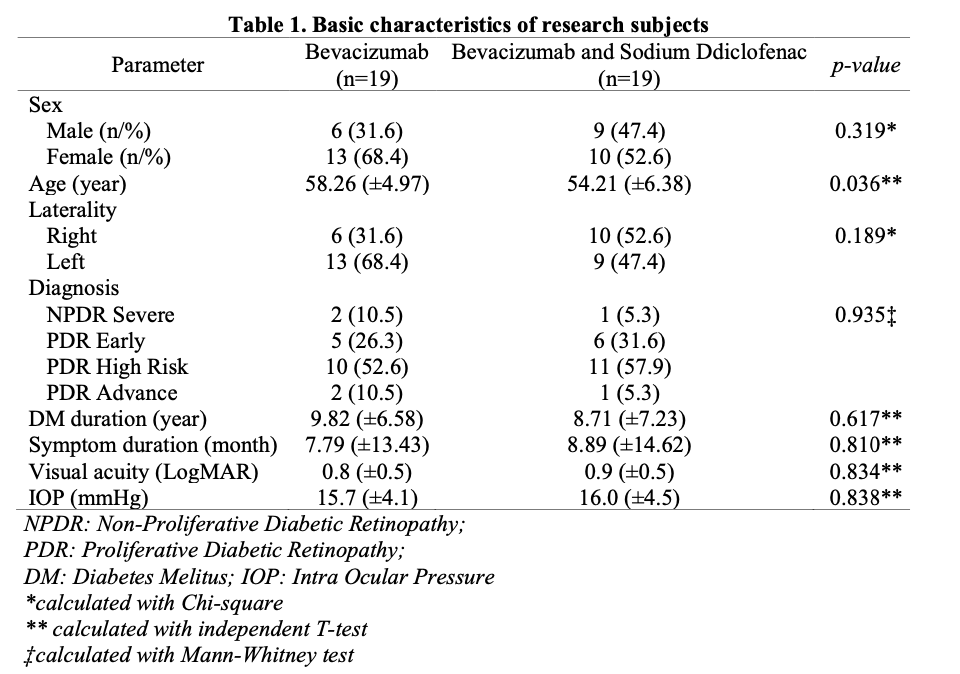Comparison of Visual Acuity and Defocus Curve after Cataract Surgery with Pure Extended Depth Focus Lens and Mini-Monovision - Interim Analysis - Oral Presentation - Experimental Study - Resident
Abstract
Abstract
Introduction & Objectives : Presbyopia after cataract surgery is still a problem despite recent surgical techniques and intraocular lens technology development. Mini-monovision techniques and pure extended depth of focus (EDoF) lenses are alternatives to achieve good distance and intermediate visual acuity at relatively inexpensive.This study aims to compare the clinical outcome after cataract surgery with binocular mini-monovision and cataract surgery using a pure monocular EDoF lens.
Methods : Subjects were randomized into the mini-monovision group (standard monofocal lenses with -1.25 D of anisometropia) and the pure EDoF group. The blinding was achieved by masking the clinical outcome examiners.
Results : Interim analysis of 16 patients revealed the outcome of uncorrected and corrected distance visual acuity (UCDVA and BCDVA) were not significantly different between groups. Median of uncorrected intermediate visual acuity (UIVA) and mean of uncorrected near visual acuity (UNVA) of binocular mini-monovision were 0.10 (0-0.10) LogMar and 0.26 + 0.12 LogMar. Median UIVA & mean UNVA monocular EDoF were 0.19 (0.14-0.50) LogMar and 0.54 + 0.11 LogMar, respectively. The Mann- Whitney U test of UIVA between groups revealed p=0.001, and the unpaired T-test of UNVA revealed p=0.000. Mean defocus curve of -2.50 D lens were 0.31 LogMar in binocular mini- monovision group and 0.51 LogMar monocular in EDoF group (p=0.019).
Conclusion : UIVA, UNVA and defocus curve of -2.50 D lens in the mini-monovision group were better than the EDoF group.
Full text article
References
(-)
Authors

This work is licensed under a Creative Commons Attribution-NonCommercial-ShareAlike 4.0 International License.


